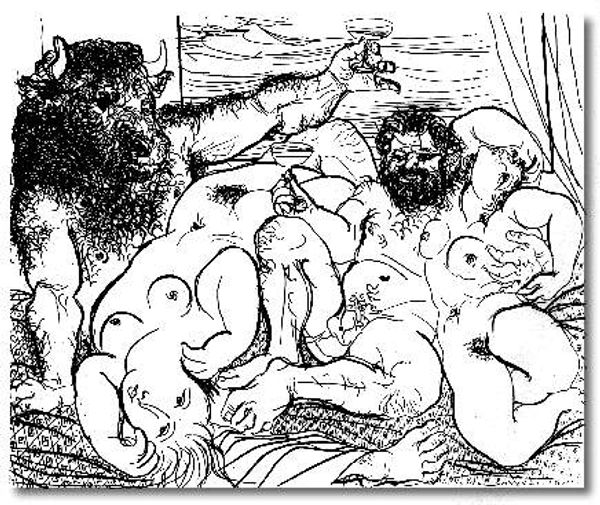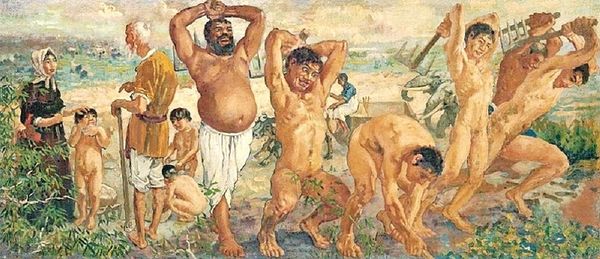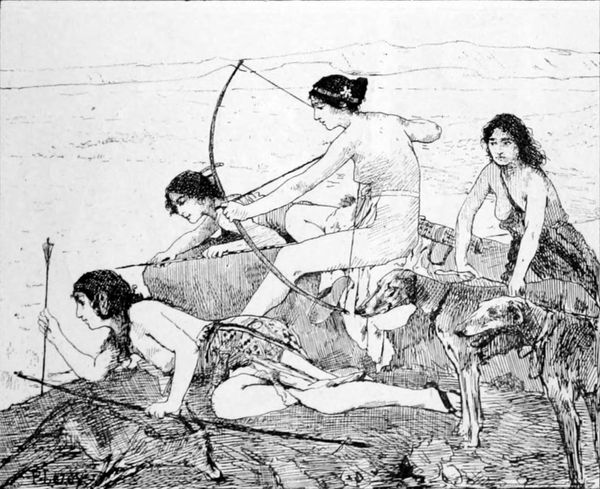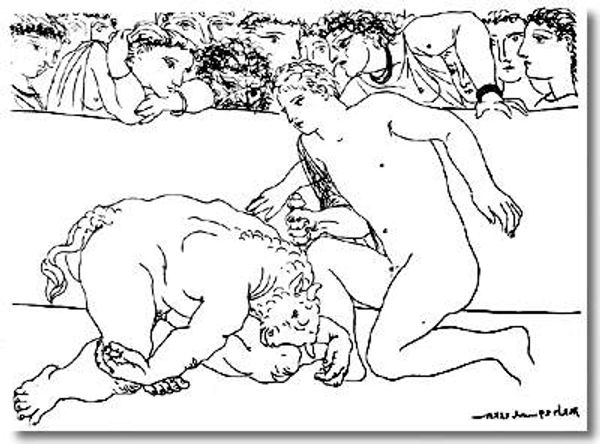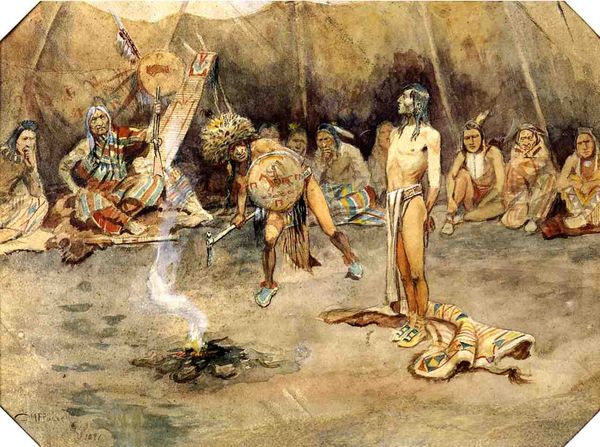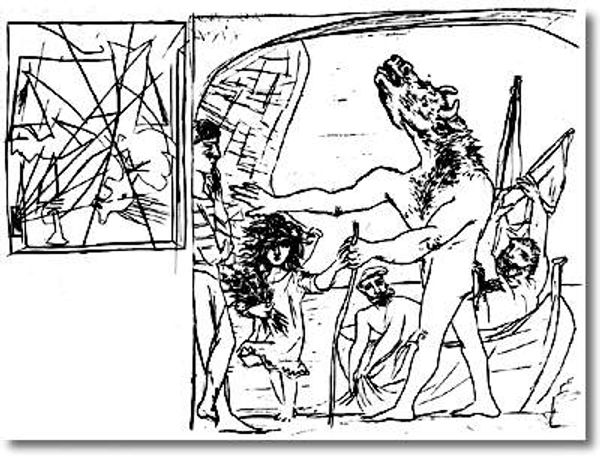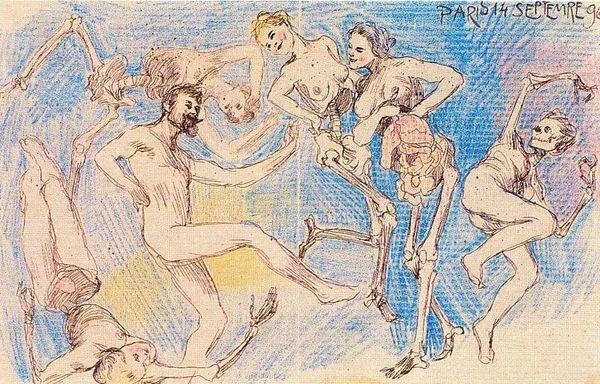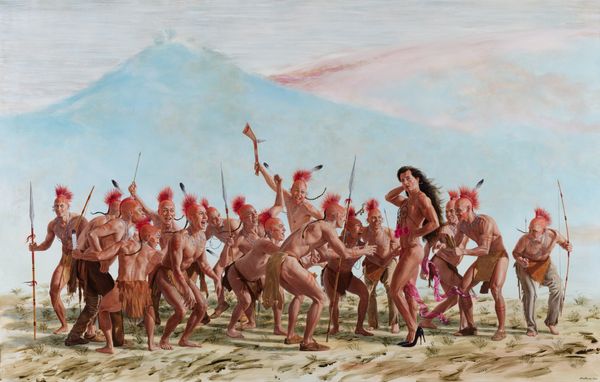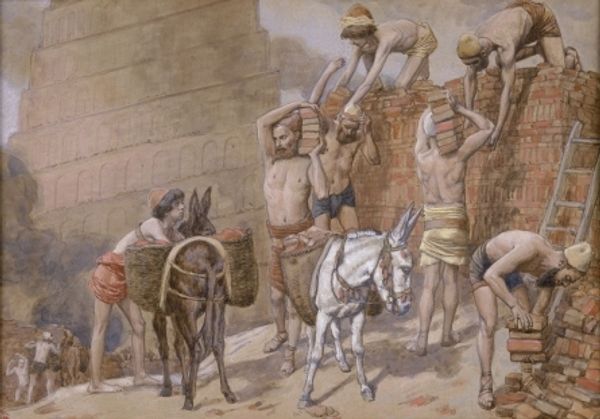
tempera, painting
#
portrait
#
narrative-art
#
tempera
#
painting
#
asian-art
#
figuration
#
social-realism
#
human
#
painting art
#
history-painting
#
expressionist
#
realism
Copyright: Public domain China
Curator: This monumental piece is titled "The Fool Who Moved the Mountains" by Xu Beihong. It's an imposing tempera painting focused on figuration. What strikes you first about it? Editor: Immediately, I'm struck by the stark contrast. There's this dynamic group, toiling, half-clothed, actively breaking the land; then to their left are fully clothed figures walking. What does that contrast signify? Curator: Given its title and the artist's leaning towards social realism, one could interpret the image of these figures in labor as embodiments of the spirit of collective strength and determination. There's an echo of historical narrative here. Note how Beihong captures not just bodies in action, but also the strain and communal effort in their faces and posture. Editor: True, but beyond that immediate visual story, there is also the prominent presence of the elephant on the far left: in that position within the painting, does the artist aim for it to function as a symbol? Is the elephant strength, endurance, something else? Curator: Precisely, the elephant, a traditional symbol of strength and wisdom, plays a dual role. It literally carries material for the endeavor but is also evocative. One could read this, using Beihong's approach to technique, as referencing folk traditions where sheer will reshapes landscapes. What of the materials? Beihong's tempera use presents subdued, earthy tonalities. How might we see that playing out here? Editor: With those colors and the visible brushstrokes, I detect both monumentality and raw humanity, as though we were witnessing the forging of a civilization. It also seems that the color choices support that symbolism and highlight both earthiness and the grandeur of this ambitious undertaking. Curator: The varied skin tones contribute, as well, subtly unifying this heterogeneous group laboring together. Editor: Yes. As our eyes wander through the scene, that focus on unity and the diverse representations make an optimistic, inspiring statement about society and progress. I read these workers as embodying collective memory in their actions, bridging the ancestral past with the promise of a future sculpted by labor and intent. Curator: Indeed. Viewing “The Fool Who Moved the Mountains” reveals Beihong's masterful skill in evoking themes of history, collective action, and humanist values. Editor: Right. I think examining Xu Beihong’s visual symbolism also allows one to feel deeply connected to themes that persist, that go beyond epochs or physical place.
Comments
No comments
Be the first to comment and join the conversation on the ultimate creative platform.
